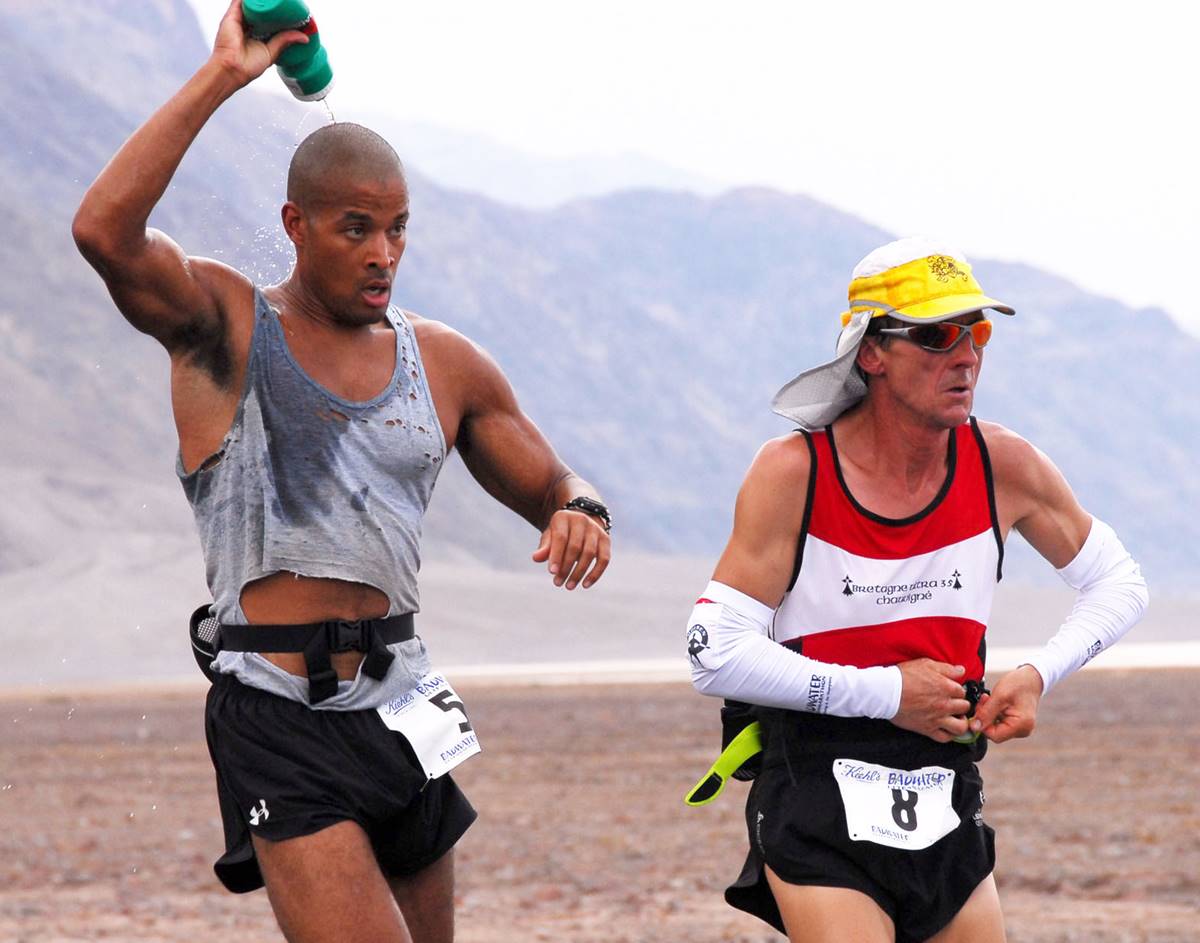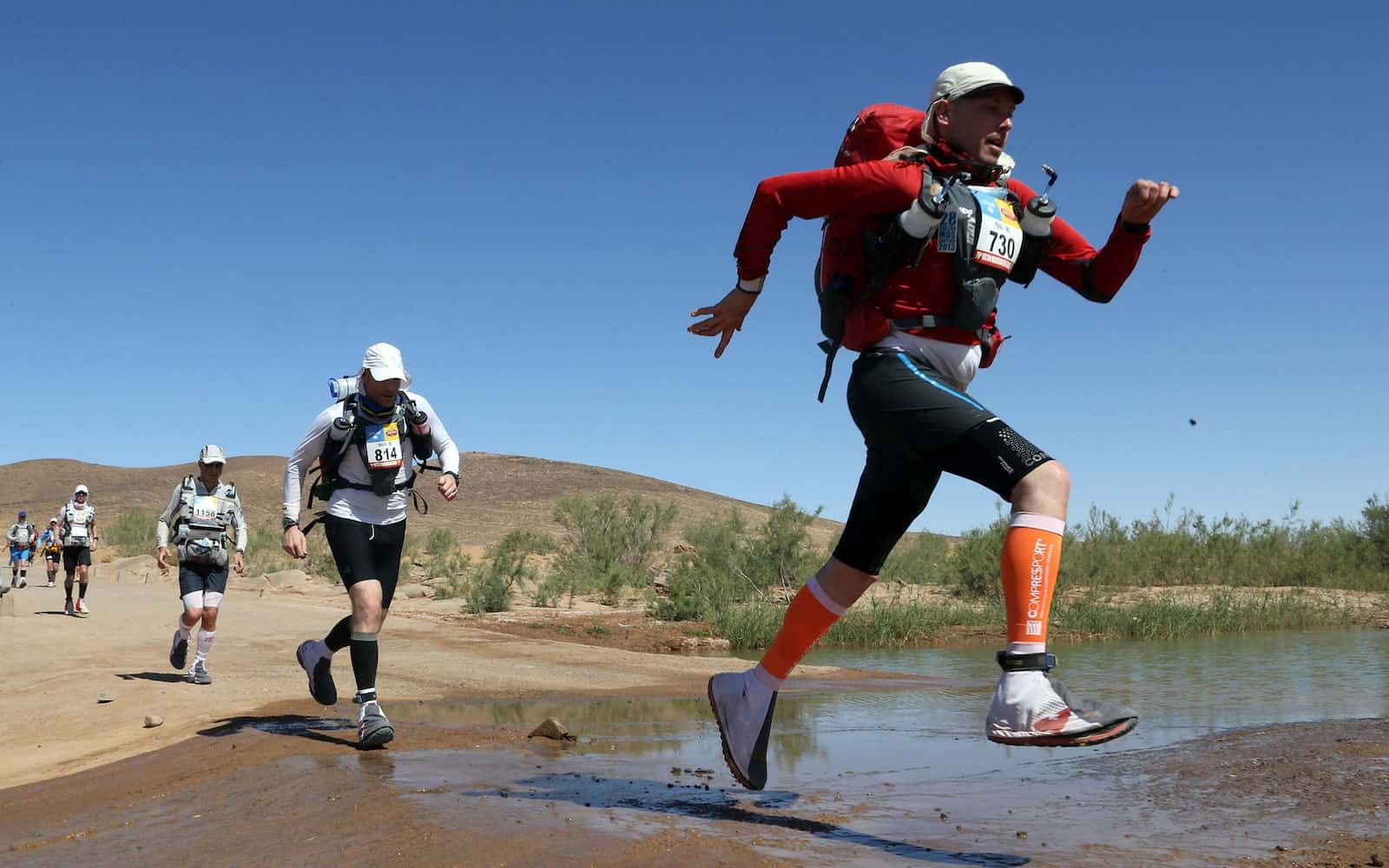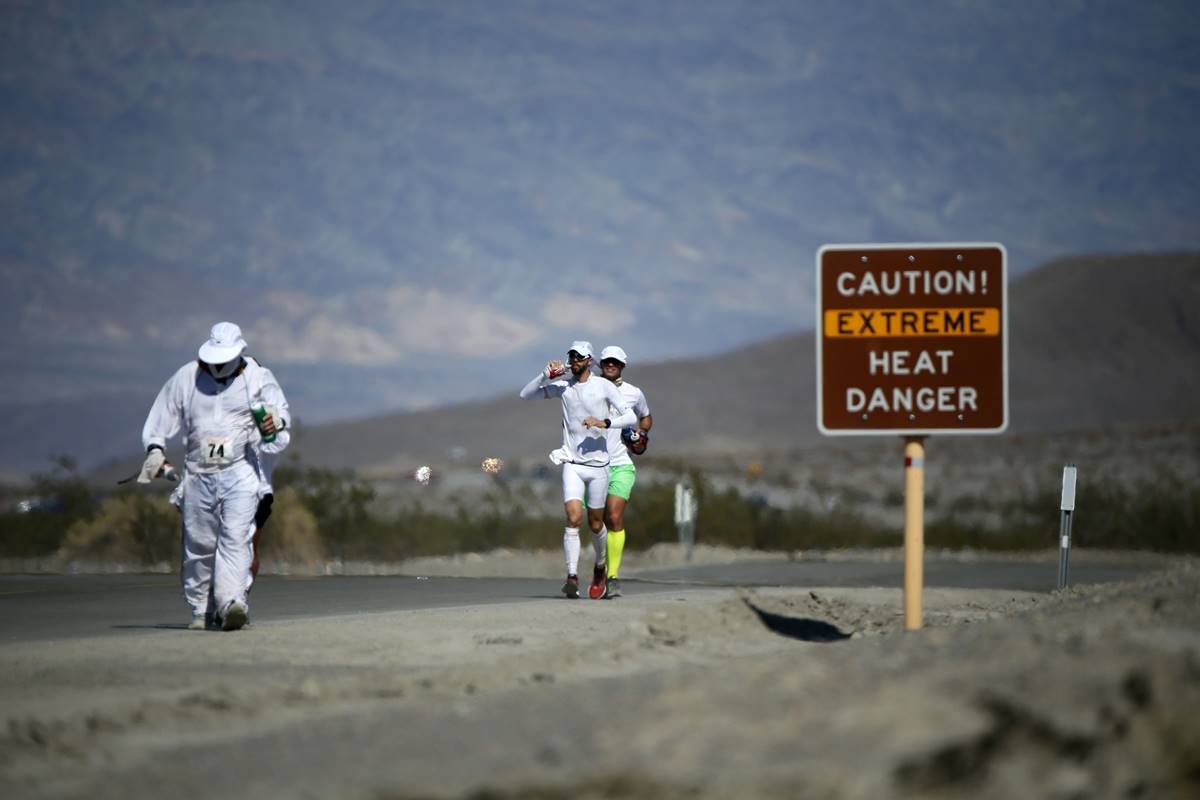Home>Misc>Featured>How Long Does It Take To Run An Ultramarathon?


Featured
How Long Does It Take To Run An Ultramarathon?
Modified: January 22, 2024
Discover how long it takes to run an ultramarathon and get featured insights on this endurance challenge. Prepare for the ultimate test of endurance!
Introduction
Ultramarathons are the ultimate test of endurance and willpower, pushing runners to their limits and beyond. These grueling races go beyond the traditional marathon distance of 26.2 miles, challenging participants to conquer distances ranging from 50 kilometers to 100 miles or more. As the popularity of ultramarathons continues to soar, many aspiring runners are curious about how long it takes to complete such an intense feat.
Running an ultramarathon requires meticulous training, mental fortitude, and a deep understanding of one’s own capabilities. From navigating treacherous terrain to battling extreme weather conditions, participants must adapt to various factors that can affect their overall race time.
In this article, we will explore the world of ultramarathons and delve into the factors that can influence the duration of these epic races. We will examine the average completion times, as well as the fastest and slowest finishes in ultramarathon history. Additionally, we will discuss the mental and physical challenges that runners face during these events and provide some tips for those who aspire to take on their first ultramarathon.
So, if you’ve ever wondered how long it takes to run an ultramarathon, buckle up and get ready for an insightful journey into the world of endurance running.
What is an Ultramarathon?
An ultramarathon is a long-distance running race that goes beyond the traditional marathon distance of 26.2 miles (42.195 kilometers). While marathons are known for their challenging nature, ultramarathons take endurance running to a whole new level.
There are several types of ultramarathons, including 50 kilometer (31.07 miles), 50 mile (80.47 kilometers), 100 kilometer (62.14 miles), and 100 mile (160.93 kilometers) races. However, the distances can vary greatly, with some ultramarathons spanning up to 200 miles or more.
Ultramarathons can be held on various terrains, ranging from road races that take place on paved surfaces to trail races that traverse rugged and uneven paths through mountains, deserts, forests, or even snowy landscapes. Each type of ultramarathon presents its own set of challenges and requires runners to adapt their training and strategies accordingly.
What sets ultramarathons apart from other races is the immense mental and physical endurance required to complete them. Runners must have a strong resolve and a deep determination to keep pushing through fatigue, discomfort, and pain, often running for many hours or even days.
Ultramarathons are not only a test of physical strength but also a journey of self-discovery and personal growth. Many participants use these races as an opportunity to push their limits, challenging themselves to go beyond what they thought was possible.
It is worth noting that ultramarathons have gained significant popularity in recent years, attracting a diverse range of participants. While elite runners often dominate the top spots in these races, ultramarathons also welcome amateurs and recreational runners looking to challenge themselves and experience the incredible sense of accomplishment that comes with crossing the finish line.
In the next section, we will explore the training required to undertake an ultramarathon and the steps runners need to take to prepare themselves for this ultimate endurance challenge.
Training for an Ultramarathon
Training for an ultramarathon is a rigorous and disciplined process that requires months of preparation. Unlike shorter-distance races, ultramarathons demand a high level of endurance and mental fortitude. Here are some key elements to consider when training for an ultramarathon:
- Gradual Build-Up: Building a solid foundation of running fitness is crucial for successfully completing an ultramarathon. Start by gradually increasing your weekly mileage, allowing your body to adapt to the increased demands over time. It’s important to listen to your body and avoid overtraining, as this can lead to injury or burnout.
- Long Runs: Long runs are a fundamental part of ultramarathon training. Aim to gradually increase the distance of your longest run each week, simulating the race conditions you will face. Incorporate different terrains and elevations into your long runs to prepare yourself for the challenges you may encounter during the race.
- Hill Training: Ultramarathons often involve significant elevation changes. Including hill training in your regimen will help build strength and endurance in your leg muscles. Find hilly routes or incorporate hill repeats into your training to prepare your body for the uphill and downhill sections of the race.
- Back-to-Back Runs: One unique aspect of ultramarathon training is the inclusion of back-to-back runs. This involves doing a long run one day followed by another run the next day, simulating the accumulated fatigue you may experience during the race.
- Nutrition and Hydration: Proper nutrition and hydration are crucial during ultramarathon training and the race itself. Experiment with different fuels, such as gels, electrolyte drinks, and energy bars, during your long runs to find what works best for you. Practice fueling and hydrating consistently to avoid depletion and optimize your performance.
- Mental Preparation: Ultramarathons can test your mental resilience. Incorporate mental training techniques into your preparation, such as visualization, positive self-talk, and mental imagery, to strengthen your mental endurance and overcome challenging moments during the race.
- Rest and Recovery: Rest and recovery are just as important as the training itself. Give your body time to rest and repair by incorporating rest days and easy runs into your training schedule. Prioritize sleep, incorporate foam rolling, stretching, and other recovery techniques to aid in your body’s recovery process.
Remember, every individual is different, and it’s important to tailor your training plan to your own abilities and goals. Consulting with a running coach or experienced ultramarathon runner can provide valuable guidance and help you structure a training plan that suits your specific needs.
In the next section, we will explore the various factors that can influence the duration of an ultramarathon race.
Factors Affecting the Duration of an Ultramarathon
The duration of an ultramarathon can vary greatly depending on several factors. Understanding these factors can help runners gauge their expected finish time and prepare for the challenges they may encounter during the race. Here are some of the key factors that can affect the duration of an ultramarathon:
- Terrain: The type of terrain can have a significant impact on the duration of an ultramarathon. Courses that involve rugged trails, steep ascents and descents, or uneven surfaces can slow down the pace and require more time to complete. On the other hand, flatter and smoother terrains can facilitate faster speeds and shorter race durations.
- Elevation Gain: Ultramarathons held in mountainous or hilly regions often involve substantial elevation gain. The amount of climbing required during the race can significantly affect the pace and duration. Runners must prepare for the physical and mental challenges of uphill climbs and the impact it may have on their overall race time.
- Weather Conditions: Extreme weather conditions can greatly impact the duration of an ultramarathon. Heat, cold, rain, and wind can all affect performance and slow down runners. Adverse weather conditions can also present additional challenges such as dehydration, hypothermia, or decreased grip on slippery surfaces.
- Altitude: Ultramarathons conducted at high altitudes pose unique challenges due to decreased oxygen levels. The reduced air density can affect runners’ breathing, energy levels, and overall performance. Adjusting to the altitude requires acclimatization, which can impact the duration of the race.
- Course Difficulty: The overall difficulty level of the course plays a significant role in dictating the duration of the ultramarathon. Factors like technical sections, river crossings, or rocky paths can slow down runners and increase the overall race time. Similarly, courses with well-maintained trails and clear markers can facilitate a faster pace.
- Runner’s Experience and Fitness: The experience and fitness level of the runner can also impact the duration of an ultramarathon. Experienced ultramarathon runners who have built up endurance, strength, and mental fortitude through years of training may be able to complete the race more efficiently compared to first-time participants or those with less running experience.
- Pacing Strategy: The pacing strategy adopted by the runner can have a significant impact on their race duration. Starting too fast and burning out early can result in a slower finish time. Conversely, pacing oneself conservatively and strategically can lead to a more consistent and faster race duration. Proper pacing involves finding the right balance between pushing the limits and avoiding premature exhaustion.
It’s important for runners to consider these factors when setting their goals and expectations for an ultramarathon. Each race is unique, and understanding the specific challenges and conditions of the course is crucial for planning and executing an effective race strategy.
In the next section, we will explore the average time it takes to complete an ultramarathon.
Average Time to Complete an Ultramarathon
The average time to complete an ultramarathon can vary significantly depending on factors such as the distance of the race, terrain, elevation, weather conditions, and individual runner capabilities.
For shorter ultramarathon distances, such as a 50-kilometer race (31.07 miles), the average completion time ranges from around 4 to 7 hours. However, it’s important to note that these times can vary based on the specific course and conditions.
As the distance extends to a 50-mile race (80.47 kilometers), the average completion time can range from 8 to 12 hours or more, depending on the complexity of the course and elevation gain. Some experienced runners can finish a 50-mile race in under 8 hours, while others may require more than 12 hours to complete it.
For even longer ultramarathons, such as 100 kilometers (62.14 miles) or 100 miles (160.93 kilometers), the average completion times can span a wide range. The average time to finish a 100-kilometer ultramarathon can range from 10 to 16 hours, and for a 100-mile race, it can take anywhere from 20 to 30 hours or longer.
However, it’s important to remember that these times represent the average completion range and can be influenced by factors such as the difficulty of the course, the elevation gain, weather conditions, and individual runner capabilities.
Elite runners and experienced ultramarathon athletes often achieve faster finish times due to their high level of fitness, training, and race experience. They can complete longer distances in significantly less time compared to novice or recreational runners.
It’s worth noting that ultramarathons are not solely about finishing in the quickest time. These races are highly individualistic, and each runner sets their goals based on their abilities and aspirations. Some runners prioritize personal bests and podium finishes, while others focus on the satisfaction of completing the race, regardless of the time taken.
When setting goals for an ultramarathon, it’s important to consider your experience, training, and abilities. Consulting with experienced ultramarathon runners or coaches can provide valuable insights and help you establish realistic expectations.
In the next sections, we will explore the fastest and slowest ultramarathon finishes in history, giving you a glimpse into the incredible achievements of some notable runners.
Fastest Ultramarathon Finishes in History
Ultramarathons attract some of the best endurance runners in the world, and their remarkable performances have set records that inspire awe and admiration. Here are some of the fastest ultramarathon finishes in history:
- 100 Kilometers: The current world record for the fastest 100-kilometer race is held by Takahiro Sunada of Japan, who completed the distance in an astonishing 6 hours, 13 minutes, and 33 seconds at the Lake Saroma Ultramarathon in 1998.
- 100 Miles: The fastest known time for 100 miles belongs to Zach Bitter of the United States, who set a record of 11 hours, 19 minutes, and 18 seconds in 2019 at the Six Days in the Dome event in Milwaukee.
- 24-Hour Run: The world record for the greatest distance covered in 24 hours is held by Yiannis Kouros of Greece, who ran a mind-boggling 188.68 miles (303.506 kilometers) in Adelaide, Australia back in 1997.
- Badwater Ultramarathon: The Badwater Ultramarathon, known as one of the toughest races on the planet, has seen impressive finishes. The current course record for the 135-mile race from Death Valley to Mount Whitney, California, is held by Pete Kostelnick, who completed it in 21 hours, 56 minutes, and 32 seconds in 2016.
- Ultra Trail du Mont Blanc (UTMB): UTMB, a prestigious 171-kilometer (106-mile) race around the Mont Blanc massif, has witnessed remarkable performances. The fastest finish on the men’s side is held by Jim Walmsley of the United States, who completed the race in 20 hours, 49 minutes, and 14 seconds in 2019. The women’s record is held by Rory Bosio of the United States, who finished in 22 hours, 37 minutes, and 26 seconds in 2013.
These extraordinary feats of endurance exemplify the exceptional physical and mental capabilities of elite ultramarathon runners. Their performances inspire aspiring ultramarathoners to push their limits and strive for greatness.
While these records represent the pinnacle of ultramarathon achievements, it’s important to remember that each runner’s journey is unique. Completing an ultramarathon is a significant accomplishment, regardless of the time taken. Whether aiming to break records or simply challenging oneself, the joy and satisfaction of completing an ultramarathon are equally rewarding.
Now that we’ve explored some of the fastest finishes in ultramarathon history, let’s take a look at the other end of the spectrum and examine the slowest finishes on record.
Slowest Ultramarathon Finishes in History
Ultramarathons are known for testing the limits of human endurance, and the slowest finishes in history showcase the incredible perseverance and determination of individuals who refused to give up. Here are some notable examples of the slowest ultramarathon finishes:
- Barkley Marathons: The Barkley Marathons is a notoriously difficult and secretive ultramarathon held in Frozen Head State Park, Tennessee. It consists of five laps totaling approximately 100 miles (160.93 kilometers). Finishers are rare, and some participants have taken over 60 hours to complete the race.
- The Last Annual Vol State Road Race: This is a 314-mile (505 kilometers) race that traverses the state of Tennessee. Kipley Drew of the United States holds the slowest finish time, completing the race in 10 days, 4 hours, and 59 minutes.
- The Marathon des Sables: This multi-stage race covers approximately 156 miles (250 kilometers) through the Sahara Desert in Morocco. Finishers endure extreme heat and challenging terrain. While the fastest runners complete the race in about 20-25 hours, the slowest finish times have been over 100 hours, demonstrating the incredible resilience required to persevere through such harsh conditions.
- Self-Transcendence 3,100 Mile Race: This race is considered one of the most grueling ultramarathons, consisting of running 3,100 miles (4,989 kilometers) around a half-mile loop in New York City. The slowest recorded finish time was around 52 days, highlighting the immense physical and mental endurance required to complete such a monumental distance.
Each of these slowest finishes represents a remarkable accomplishment in its own right. It takes incredible determination, mental fortitude, and an unwavering spirit to continue moving forward despite facing immense challenges and the passage of significant time.
While these slower finish times may be far from the top of the leaderboard, they serve as a testament to the inclusive and supportive nature of the ultramarathon community. Regardless of the duration, every participant who crosses the finish line is celebrated for their endurance and bravery.
Now that we have explored the fastest and slowest finishes in ultramarathon history, let’s move on to discuss the mental and physical challenges that runners face during these grueling races.
Mental and Physical Challenges of Running an Ultramarathon
Running an ultramarathon is an immense physical and mental challenge that pushes runners beyond their known limits. Endurance athletes who undertake this daunting feat must confront a range of obstacles, both physical and psychological. Here are some of the key mental and physical challenges experienced during an ultramarathon:
Physical Fatigue: Ultramarathons demand prolonged physical exertion, leading to fatigue that can affect every part of the body. Muscles ache, joints may become sore, and blisters may form. Enduring and pushing through the physical discomfort is vital to reaching the finish line.
Mental Endurance: Mental strength is paramount in ultramarathons. Runners must grapple with self-doubt, moments of despair, and the urge to quit. Maintaining focus, mental resilience, and a positive mindset during the long hours of racing can make the difference between success and failure.
Dealing with Loneliness: Running for hours or even days through remote stretches of wilderness can be a lonely experience. Many runners struggle with feelings of isolation and must find ways to stay motivated and connected to their purpose and support systems.
Navigating Self-Motivation: As the race progresses, runners often find themselves relying solely on their own inner motivation to keep going. The absence of spectators or cheering crowds makes it crucial to tap into inner strength and maintain self-motivation throughout the entire race.
Nutrition and Hydration: Fueling the body with proper nutrition and hydration during an ultramarathon is vital, but it can also present challenges. Runners must find the balance between consuming enough calories and fluids to sustain energy without overwhelming the digestive system or experiencing stomach issues along the way.
Sleep Deprivation: In longer ultramarathons, sleep deprivation becomes a significant factor as runners continue for extended periods without rest. The sleep deprivation can impair cognitive function, decision-making abilities, and overall performance, requiring mental strength to persist despite exhaustion.
Managing Course and Environmental Challenges: Ultramarathons can feature varied and unpredictable terrains, extreme weather conditions, such as heat, cold, rain, or high altitudes, and other unique environmental challenges. Runners must constantly adapt to changes in the course and weather, making time management and precautionary measures essential to success.
Overcoming these mental and physical challenges requires a combination of physical preparation, mental fortitude, and an unwavering determination to reach the finish line. Each runner’s journey is unique and deeply personal, with the challenges faced during the race becoming part of their transformative experience.
In the next section, we will provide some valuable tips for those considering running their first ultramarathon, helping them navigate the training process and race day with confidence.
Tips for Running Your First Ultramarathon
Preparing for and running your first ultramarathon can be an intimidating yet incredibly rewarding experience. To help you navigate the training process and race day, here are some valuable tips to keep in mind:
- Build Your Mileage Gradually: Gradually increase your weekly mileage to build endurance and avoid overuse injuries. Focus on consistent training and gradually lengthen your long runs to prepare your body for the demands of the race.
- Vary Your Training Terrain: Incorporate different terrains, such as trails, hills, and roads, into your training. This will help you acclimate to different surfaces and conditions that you may encounter during the ultramarathon.
- Practice Fueling: Experiment with different nutrition and hydration strategies during your long runs to find what works best for your body. Train your stomach to tolerate different fuels and practice consuming calories and fluids regularly to sustain energy levels throughout the race.
- Train with Gear and Equipment: Use your training runs to familiarize yourself with the gear and equipment you plan to use during the ultramarathon. This includes shoes, socks, hydration packs, and any other essentials. Avoid trying anything new on race day.
- Incorporate Strength and Cross-Training: Include strength training exercises to build overall body strength and prevent imbalances. Additionally, incorporate cross-training activities like cycling or swimming to reduce the risk of overuse injuries and help with recovery.
- Practice Mental Resilience: Develop mental strategies to push through tough moments during training and the race itself. Visualization, positive self-talk, and having a strong support network can all contribute to mental resilience and help you overcome difficult challenges.
- Simulate Race Conditions: During training, try to simulate race conditions as closely as possible. This could include running at similar times of day, running on similar terrain, or even doing back-to-back long runs to prepare your body for the accumulated fatigue.
- Listen to Your Body: Pay attention to any signs of injury or overtraining during your training. Rest when needed, and don’t be afraid to adjust your training plan to avoid burnout or worsening an injury.
- Practice Self-Care: Prioritize recovery and self-care throughout your training. Get adequate sleep, incorporate stretching and foam rolling into your routine, and take rest days to allow your body to heal and rebuild.
- Enjoy the Journey: Remember, running an ultramarathon is an incredible experience. Embrace the journey, enjoy the scenery, and celebrate your milestones along the way. It’s a chance to challenge yourself and discover what you’re truly capable of.
Running your first ultramarathon is a significant achievement. Stay committed to your training, be adaptable, and embrace the challenges and triumphs that come with the journey. Remember, every step forward is a step closer to your goal.
Now that you have the tips you need, it’s time to start your training and embark on this incredible ultramarathon adventure. Good luck!
Conclusion
Embarking on the journey of running an ultramarathon is a life-changing experience that requires dedication, perseverance, and mental fortitude. Through this comprehensive guide, we have explored the world of ultramarathons, from understanding what they are to the training involved, the factors that influence race durations, and the mental and physical challenges faced by participants.
We learned that ultramarathons go beyond the traditional marathon distance, challenging runners to conquer distances ranging from 50 kilometers to over 100 miles. Training for an ultramarathon involves gradual build-up, long runs, hill training, and mental preparation.
Various factors influence the duration of an ultramarathon, such as terrain, elevation, weather conditions, and the runner’s experience and fitness level. While the average completion times can vary, it’s essential to set realistic goals based on individual capabilities.
We discovered some remarkable achievements in ultramarathons, from the fastest finishes in history to the slowest, underscoring the incredible capabilities and tenacity of both elite runners and recreational participants.
Running an ultramarathon poses significant mental and physical challenges, including fatigue, mental endurance, loneliness, nutrition and hydration, sleep deprivation, and managing course and environmental factors. Overcoming these challenges requires mental strength, adaptability, and a supportive mindset.
For those considering running their first ultramarathon, we provided valuable tips including building mileage gradually, practicing fueling and mental resilience, and enjoying the journey. With dedication and a well-rounded approach to training, you can conquer the ultramarathon challenge successfully.
Remember, running an ultramarathon is not just about the destination but also about the transformative journey you undertake. The sense of accomplishment and personal growth that come from pushing your physical and mental limits are immeasurable.
So, lace up your running shoes, embrace the training, and prepare to embark on an incredible adventure of endurance and self-discovery. Whether you’re aiming to break records or simply complete the race, the ultramarathon experience is a testament to the power of the human spirit and the triumph of the human will.
Now, go out there and conquer your ultramarathon dreams. The finish line awaits!









